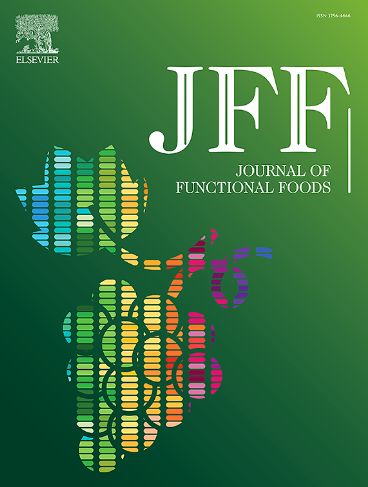揭开甜蜜的罪魁祸首:过量的果糖摄入通过次黄嘌呤积累导致肾脏损伤
IF 4
2区 农林科学
Q2 FOOD SCIENCE & TECHNOLOGY
引用次数: 0
摘要
果糖是一种常用的甜味剂,已广泛应用于食品和饮料工业。值得注意的是,长期食用富含果糖的食物被认为是导致肾脏损伤的罪魁祸首。然而,过多的果糖摄入是否会导致次黄嘌呤(HX)积累并进一步引起肾损伤,目前尚不清楚。因此,本工作为揭示果糖致肾损伤的潜在物质基础,并进一步探讨其潜在的致病机制做出了开创性的努力。结果表明,长期高果糖摄入导致HX积累,随后引发炎症和氧化损伤。此外,进一步的机制研究表明,积累的HX抑制核因子-红细胞2相关因子2 (Nrf2)核易位,从而下调下游抗氧化蛋白的表达。此外,它还能有效促进nod样受体3 (NLRP3)炎性体的激活。总之,这些发现表明,过量的果糖摄入促进了HX的积累,至少在一定程度上通过调节Keap1-Nrf2/NLRP3信号轴,进一步加重了肾损伤。本文章由计算机程序翻译,如有差异,请以英文原文为准。

Unveiling the sweet culprit: Excessive fructose intake leading to kidney injury through hypoxanthine accumulation
Fructose, a frequent-using sweeter, has been widely used in the food and beverage industry. Notably, prolonged consumption of fructose-rich diets has been recognized as a culprit causing kidney injury. However, it remains elusively obscure whether excessive fructose intake resulted in hypoxanthine (HX) accumulation and further induced kidney injury. Therefore, the present work made a pioneering endeavor to unravel the potential material basis of fructose-induced kidney injury and further probed its underlying pathogenic mechanism. Results indicated that long-term high-fructose intake contributed to HX accumulation, which subsequently triggered inflammation and oxidative damage. Moreover, further mechanistic investigations suggested that accumulated HX inhibited nuclear factor-erythroid-2-related factor 2 (Nrf2) nuclear translocation and consequently down-regulated expressions of downstream antioxidant proteins. Additionally, it effectively promoted NOD-like receptor 3 (NLRP3) inflammasome activation. Altogether, these findings suggested that excessive fructose consumption facilitated HX accumulation, which further aggravated kidney injury, at least in part, via modulating the Keap1-Nrf2/NLRP3 signaling axis.
求助全文
通过发布文献求助,成功后即可免费获取论文全文。
去求助
来源期刊

Journal of Functional Foods
FOOD SCIENCE & TECHNOLOGY-
CiteScore
9.60
自引率
1.80%
发文量
428
审稿时长
76 days
期刊介绍:
Journal of Functional Foods continues with the same aims and scope, editorial team, submission system and rigorous peer review. We give authors the possibility to publish their top-quality papers in a well-established leading journal in the food and nutrition fields. The Journal will keep its rigorous criteria to screen high impact research addressing relevant scientific topics and performed by sound methodologies.
The Journal of Functional Foods aims to bring together the results of fundamental and applied research into healthy foods and biologically active food ingredients.
The Journal is centered in the specific area at the boundaries among food technology, nutrition and health welcoming papers having a good interdisciplinary approach. The Journal will cover the fields of plant bioactives; dietary fibre, probiotics; functional lipids; bioactive peptides; vitamins, minerals and botanicals and other dietary supplements. Nutritional and technological aspects related to the development of functional foods and beverages are of core interest to the journal. Experimental works dealing with food digestion, bioavailability of food bioactives and on the mechanisms by which foods and their components are able to modulate physiological parameters connected with disease prevention are of particular interest as well as those dealing with personalized nutrition and nutritional needs in pathological subjects.
 求助内容:
求助内容: 应助结果提醒方式:
应助结果提醒方式:


